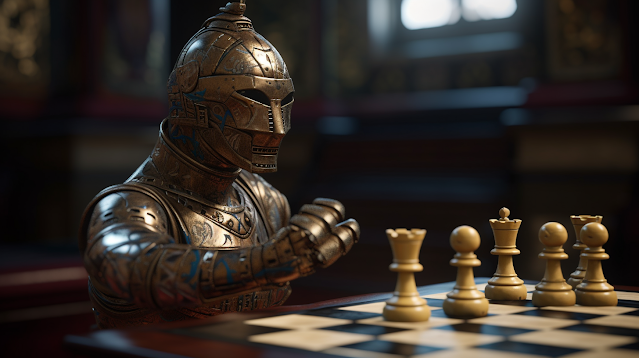How to Understand the Revolution: Chess Engines and the Rise of Grandmasters Chess Engines: The Powerhouse Behind Moder...
How to Understand the Revolution: Chess Engines and the Rise of Grandmasters
- Chess Engines: The Powerhouse Behind Modern Chess
- Grandmasters of Chess: How Chess Engines Became the Best Players in the World
Introduction
🌐 Chess, often called the "Game of Kings," has seen centuries of evolution. But the most revolutionary change came not from a grandmaster but from the realm of technology. Enter the world of chess engines! 🚀
The Rise of the Machines
📜 Chess engines made their debut in the mid-20th century, but they didn't capture the limelight until 1997. In a historic match, the reigning World Chess Champion, Garry Kasparov, faced off against IBM's Deep Blue. The outcome? Deep Blue emerged victorious, marking the beginning of a new era.
The Brains Behind the Bytes
🤖 AlphaZero: Developed by DeepMind (now under Google's wing), AlphaZero rewrote the chess rulebook. It taught itself to play chess through reinforcement learning and self-play. In a jaw-dropping feat, it outclassed Stockfish, the reigning champion, in a 100-game match. 🏆
🔥 Stockfish: An open-source juggernaut, Stockfish boasts a community of contributors that keep it at the forefront. With neural networks and continuous development, Stockfish dominates the chess engine world.
🌟 Leela Chess Zero (Lc0): Inspired by AlphaZero, Lc0 is a star on the rise. It's an open-source project using neural networks and reinforcement learning, evolving with every game.
🐉 Komodo Chess: With assistance from Grandmaster Larry Kaufmann, Komodo is a force to be reckoned with. Its adaptability makes it a preferred choice for chess players worldwide.
🧠 Houdini Chess: Developed by Robert Houdar, this commercial engine is hailed for its strength, often ranking among the top contenders in computer chess.
📚 HIARCS: The "Higher Intelligence Auto-Response Chess System" has been in the game since 1980, making it one of the oldest engines to reach 3000+ Elo points.
The Battle of Man vs. Machine: A Historic Perspective
🧙♂️ In the '90s, Kasparov vs. Deep Blue captured the world's imagination. Kasparov's loss in '97 was a testament to the power of AI. It wasn't just a game; it was human intellect vs. raw computing power.
The Human Touch
🤝 While chess engines are formidable, human intuition, creativity, and emotions still make the game uniquely appealing. Kasparov himself proposed "Advanced Chess," where humans and engines team up.
Conclusion: The Endgame
🌐 Chess engines continue to shape the chess landscape. They serve as teachers, sparring partners, and sources of inspiration. But the heart of the game remains the same—the clash of wits, the thrill of competition, and the beauty of a perfectly executed sacrifice. 🙌
Chess, the ancient game of strategy, now finds itself at the crossroads of human brilliance and artificial intelligence. Who will reign supreme? Only time will tell.
References:
- Deep Blue vs. Kasparov: The IBM Challenge
- AlphaZero: Shedding New Light on the Grandmaster of Chess
- Stockfish: The Stockfish Open Source Chess Engine
- Leela Chess Zero: A Collaborative Project
- Komodo Chess: Chess.com's Komodo Chess Engine
- Houdini Chess: The Official Website
- HIARCS Chess: A Journey Through Time
- Kasparov vs. Deep Blue: 20 Years Later
👑 The kings and queens of the chessboard, both human and machine, continue their timeless dance. Checkmate! 🗝️











No comments